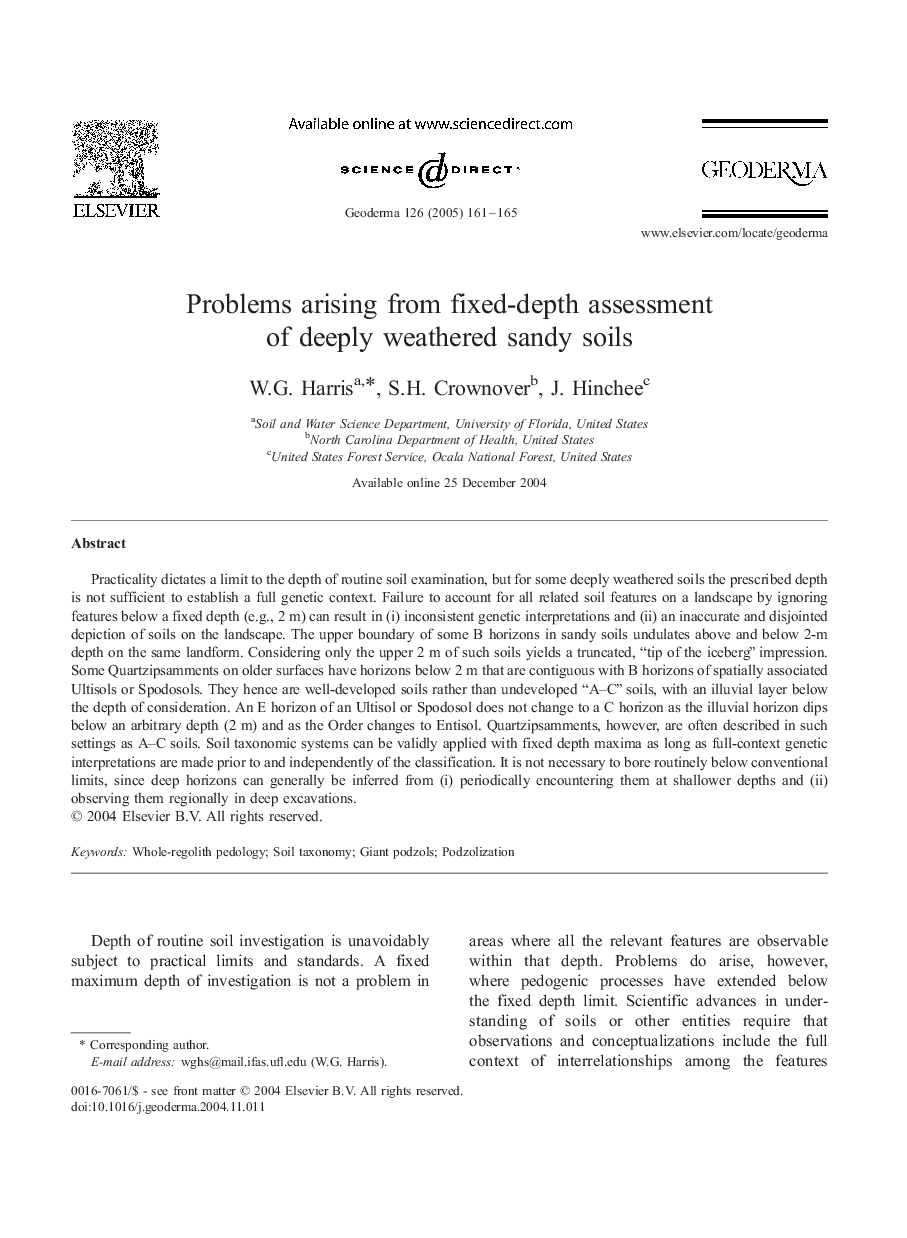| کد مقاله | کد نشریه | سال انتشار | مقاله انگلیسی | نسخه تمام متن |
|---|---|---|---|---|
| 9490466 | 1629580 | 2005 | 5 صفحه PDF | دانلود رایگان |
عنوان انگلیسی مقاله ISI
Problems arising from fixed-depth assessment of deeply weathered sandy soils
دانلود مقاله + سفارش ترجمه
دانلود مقاله ISI انگلیسی
رایگان برای ایرانیان
کلمات کلیدی
موضوعات مرتبط
مهندسی و علوم پایه
علوم زمین و سیارات
فرآیندهای سطح زمین
پیش نمایش صفحه اول مقاله

چکیده انگلیسی
Practicality dictates a limit to the depth of routine soil examination, but for some deeply weathered soils the prescribed depth is not sufficient to establish a full genetic context. Failure to account for all related soil features on a landscape by ignoring features below a fixed depth (e.g., 2 m) can result in (i) inconsistent genetic interpretations and (ii) an inaccurate and disjointed depiction of soils on the landscape. The upper boundary of some B horizons in sandy soils undulates above and below 2-m depth on the same landform. Considering only the upper 2 m of such soils yields a truncated, “tip of the iceberg” impression. Some Quartzipsamments on older surfaces have horizons below 2 m that are contiguous with B horizons of spatially associated Ultisols or Spodosols. They hence are well-developed soils rather than undeveloped “A-C” soils, with an illuvial layer below the depth of consideration. An E horizon of an Ultisol or Spodosol does not change to a C horizon as the illuvial horizon dips below an arbitrary depth (2 m) and as the Order changes to Entisol. Quartzipsamments, however, are often described in such settings as A-C soils. Soil taxonomic systems can be validly applied with fixed depth maxima as long as full-context genetic interpretations are made prior to and independently of the classification. It is not necessary to bore routinely below conventional limits, since deep horizons can generally be inferred from (i) periodically encountering them at shallower depths and (ii) observing them regionally in deep excavations.
ناشر
Database: Elsevier - ScienceDirect (ساینس دایرکت)
Journal: Geoderma - Volume 126, Issues 1â2, May 2005, Pages 161-165
Journal: Geoderma - Volume 126, Issues 1â2, May 2005, Pages 161-165
نویسندگان
W.G. Harris, S.H. Crownover, J. Hinchee,